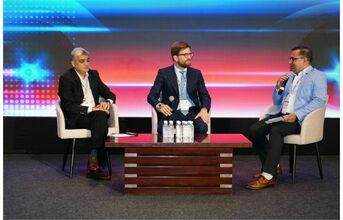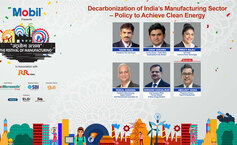
Designers and engineers are increasingly tasked with thinking about the product from the outset. This shift has implications for material selection, introducing the need to incorporate principles of a circular economy. This involves considerations such as getting these materials back or increasing the product life cycle. To address something so multifaceted, collaboration becomes essential, said Stillings.
Sandeep echoed this thought and added that sustainability also encompasses the two key areas of life cycle assessment and end of life. Designers must think about this right from day one. The product must be manufactured sustainably, and at the end of its life, it must be either recycled, reused, or repurposed.
Ramani pointed out that, in addition to being environmentally friendly, sustainable designs must also take care of social requirements and economics.
In lieu of this, he asked which of the three is often compromised, and can a balance be achieved?
With respect to the environment, Waykole suggested that a material might not be biodegradable but must reduce energy or water consumption. Further, with respect to economics, it is not true that sustainable materials are always costly; there is a need to look at end-to-end results, as in the long term, it is likely that these materials can be cost-effective. Lastly, with respect to social requirements, Sandeep saw no issue and, in fact, went on to suggest that it can have a positive impact.
Christopher said that whether a compromise is made or not depends on the time frame that one looks at. If the economic situation is seen with respect to raw materials, the price will be higher, as the current value chain is based on scale and that scale has not been achieved yet.
Thus, he concluded his statement by saying that an economic compromise at the initial stages needs to be made. Once the system scales, it will generate profitable value streams. Socially, this will help with localisation efforts and generate a positive impact.
The discussion shifted to Christopher answering that it is indeed a challenge when designers require natural materials which are hard to process. He shared that in his interactions with designers and CMF experts, he's observed that they are critical about plastics, and are eager to know more. If there are dialogue platforms that enable discussions between raw material suppliers and designers, there can be solutions which both work together on, and create genuinely good examples.
Sandeep added that sustainability does not always equate itself with biomaterials or fibre-based materials. Processing an engineering plastic compound with a rejection rate of nearly 0.5 per cent is considered sustainable because current injection moulding technology can minimise scrap to almost 0 per cent through recycling. On the contrary, introducing biodegradable material without adequate technology may result in a 20 per cent scrap rate, making it an unsustainable solution. Waykole suggested a gradual approach, allowing technology to evolve. In the meantime, sustainability can be achieved through alternative methods. Instead of leaping towards options not currently available in India.
Christopher noted an increasing trend where individuals express a desire to create products that appear more sustainable, often leaning towards speckled materials to mimic the look of recycled or scrapped materials and shared that this might come at the expense of compromising mechanical properties and, consequently, the durability of the product. Overusing effect pigments, for instance, can hinder the material's performance. Christopher also stressed the need to avoid ‘greenwashing' cautioning against the tendency to opt for virgin materials merely for their appearance, rather than using recycled materials.
Continue Reading on Page 3



























